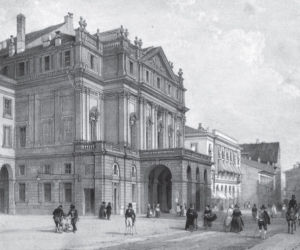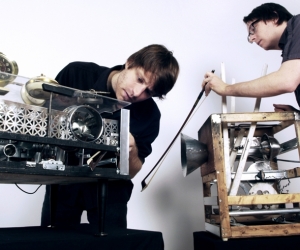
It’s July 2001 in St. John’s, Newfoundland—the one-hundredth anniversary of Marconi’s successful reception of transatlantic wireless transmissions on Signal Hill. In town on a visit, I decide to pay homage to the event by hiking up the Harbour Trail to Signal Hill. The trail possesses a variety of physical and aural features that define both St. John’s and Newfoundland. Starting in the city proper, it follows the north shore of St. John’s Harbour out to the head of the Avalon Peninsula, and then, turning west, meanders up to the Cabot Tower on Signal Hill.
Starting out, I walk down what seems to be a forgotten road that ends up snaking its way along the Middle, Top, and Outer Battery Roads, the ambient hum of the city falling away behind the sea-cliff wall. St. John’s is a harbour-based city and, as such, the roads slope steeply away from the waterfront. The effect of this geography on the soundscape is impressive, creating pockets of silence where the ambient soundscape disappears, attenuated by a dip in the road or by the presence of closely spaced buildings. As Newfoundland’s most populated city, St. John’s has all the attendant city sounds—cars, people, sirens, etc.—but at lesser density; the noise is more easily escaped.
As I approach the end of Outer Battery Road where the city development is supposed to end, the sound of voices grows louder and I find that the path leads me directly across the front porch of a house where a group of men sit and drink their morning tea. They greet me, all speaking with the trademark Newfoundland accent. I struggle to follow the conversation that I have accidentally stumbled into, as I’m asked, “What you goin’ at?” Part Irish lilt, part Scottish rapid-fire delivery, but unmistakably Newfoundland.
Finally, out on the footpath the urban soundscape fades and is replaced by the sounds of broken rock being dislodged by my shoes and of water moving against rock cliffs, as the trail narrows and follows dangerously close to a sharp drop into the water. Mixed into this is the sudden and unmistakable distant hum of cars that are just visible, driving out to the end of Fort Amherst Road a half-kilometre across the harbour. Unlike the sounds on land, there is nothing to block or attenuate the soundwaves’ progress across the water, where they travel quickly and clearly. Out here on the Peninsula, the lack of birdsong is notable. The seagulls are omnipresent but, curiously, the attendant screes and calls are missing.
Turning in from the harbour and walking uphill toward Signal Hill, the sound of the waves is masked by the wind. It’s obvious why Marconi mounted his antenna on a kite atop this hill. The wind is strong and directional. You can play with the sound of it by turning your head to divert the whistling in your ears. Marconi’s kite is long gone, but the flag mounted on top of Cabot tower mimics what I can only imagine that event sounded like, as I listen to the buzz of the flagpole guy wires holding their ground against the prevailing wind.
Image: Copyright CC BY-SA 3.0 2006 Tolivero.


